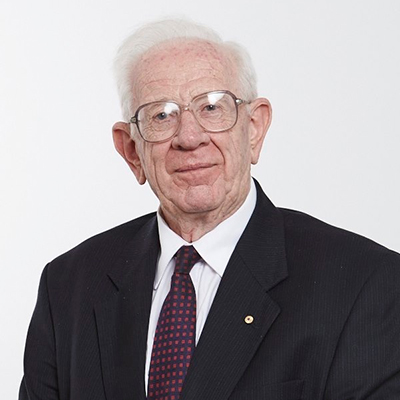

In my Switzer Daily article of 11 December “My Australian predictions for 2024” My Australian predictions for 2024 - Switzer Daily I wrote: “In the summer of 2024, there will be a by-election for the federal Victorian electoral division of Dunkley, created by the tragic death of Peta Murphy occurring on Monday 4 December. The Liberal Party will need a swing of 6.3% to take Dunkley. My prediction is that Labor will retain the seat, but I’ll elaborate in a special article written on the eve of polling day itself.”
Now that nominations have closed (and we know that there are eight candidates) we are on the eve of polling day, so let me say now that my prediction will be proven correct. My reading of Australian seasons is that Saint Patrick’s Day (Sunday 17 March) is the last day of summer, so I have already been proved right in that detail – but I’ll also be proved right on the winner too. The only thing to have changed since December has been the re-designing of the stage 3 tax cuts. Whatever one may think of the merits of the new policy, I have yet to find a commentator who disputes that Anthony Albanese and Jim Chalmers have played the politics brilliantly. Both these men have 2 March as their birthday (1963 for Albo, 1978 for Jim) and both will get an excellent birthday present, Dunkley, on 2 March 2024, won by Jodie Belyea (Labor).
The last time a federal by-election was caused by a death was for Canning (WA) won in September 2015 by Andrew Hastie (Liberal). Lying in time between Canning and Dunkley were 14 by-elections caused by resignations or High Court disqualifications of those who had won at the previous general election. Dunkley was named in honour of Louisa Margaret Dunkley, 1866-1927. Dunkley was a union leader and feminist who founded the Victorian Women’s Post and Telegraph Association in 1900 and campaigned for equal pay for women.
The above information leaves me to give a brief psephological history of Dunkley, which has always been a marginal seat on my pendulum, often described by me as “the litmus seat” or “the political fulcrum”. It was created in 1984 from parts of Flinders, Isaacs and Holt. That was the year when the size of the House of Representatives was increased from 125 to 148, creating six new Victorian seats, up from 33 to 39. (Going up and down since by single seats, the present number is also 39). Dunkley has always been based on Frankston, on the bayside south-east of Melbourne. It originally included Mornington. Its southern polling places have always been solidly Liberal, its northern ones Labor. It was held by Labor from 1984 to 1990, Liberal from 1990 to 1993, Labor again from 1993 to 1996, Liberal from 1996 to 2019, then Labor since 2019. It has, however, had just one long-term member, Bruce Billson (Liberal) from 1996 to 2016.
Although Dunkley has always appeared to be a swinging seat, its change of member has been as often due to boundary changes as to voting changes. Remove northern polling places and add southern ones – the Liberal vote improves. Remove southern polling places and add northern ones – the Labor vote improves. On the present map, the main places in Dunkley are Baxter, Carrum Downs, Frankston, Karingal, Langwarrin, Mount Eliza, Seaford and Skye. There have been Victorian federal redistributions in 1984, 1989, 1995, 2003, 2010, 2018 and 2021.
Let me give two examples. Following the 1993 election, the Liberal Party needed a swing of only 0.7% to take Dunkley – but there was a redistribution in 1995 that turned Dunkley into a notional Liberal seat. So, Labor then needed a 2.7% swing to retain Dunkley. That was due to Dunkley gaining 16,000 electors from Flinders but losing 16,000 to Isaacs. The same happened in reverse some 20 years later. While the total area of Dunkley remained the same, Liberal voting territory around Mornington was transferred to Flinders while Labor-voting territory from Carrum Downs and Skye was added from Isaacs. This most recent redistribution, therefore, reduced the Liberal 2016 percentage from 51.4 to 48.9, with Labor increasing from 48.6 to 51.1. Peta Murphy gained Dunkley in 2019 mainly due to boundary changes. Gilmore (NSW), Corangamite (Victoria) and Dunkley (Victoria) were gained by Labor against the pro-Coalition voting trend of 2019, which gave Scott Morrison his “miracle” victory. Of the three seats, only Gilmore was unchanged in boundaries.
Anyway, here are the May 2022 two-party preferred voting statistics:
Peta Murphy (Labor) 53,865 votes 56.27%
Sharn Coombes (Liberal) 41,857 votes 43.73%
On my calculations, the average swing against governments at by-elections since Federation has been 4%. So, if that were the case in Dunkley, the distribution would be 52.3 to 47.7 in Labor’s favour. In terms of the raw two-party preferred votes, therefore, my estimate is that Belyea will finish up with 46,000 votes compared with 42,000 votes for the Liberal candidate, Nathan Conroy. So, a 12,000-vote margin for Murphy would become a 4,000-vote margin for Belyea.